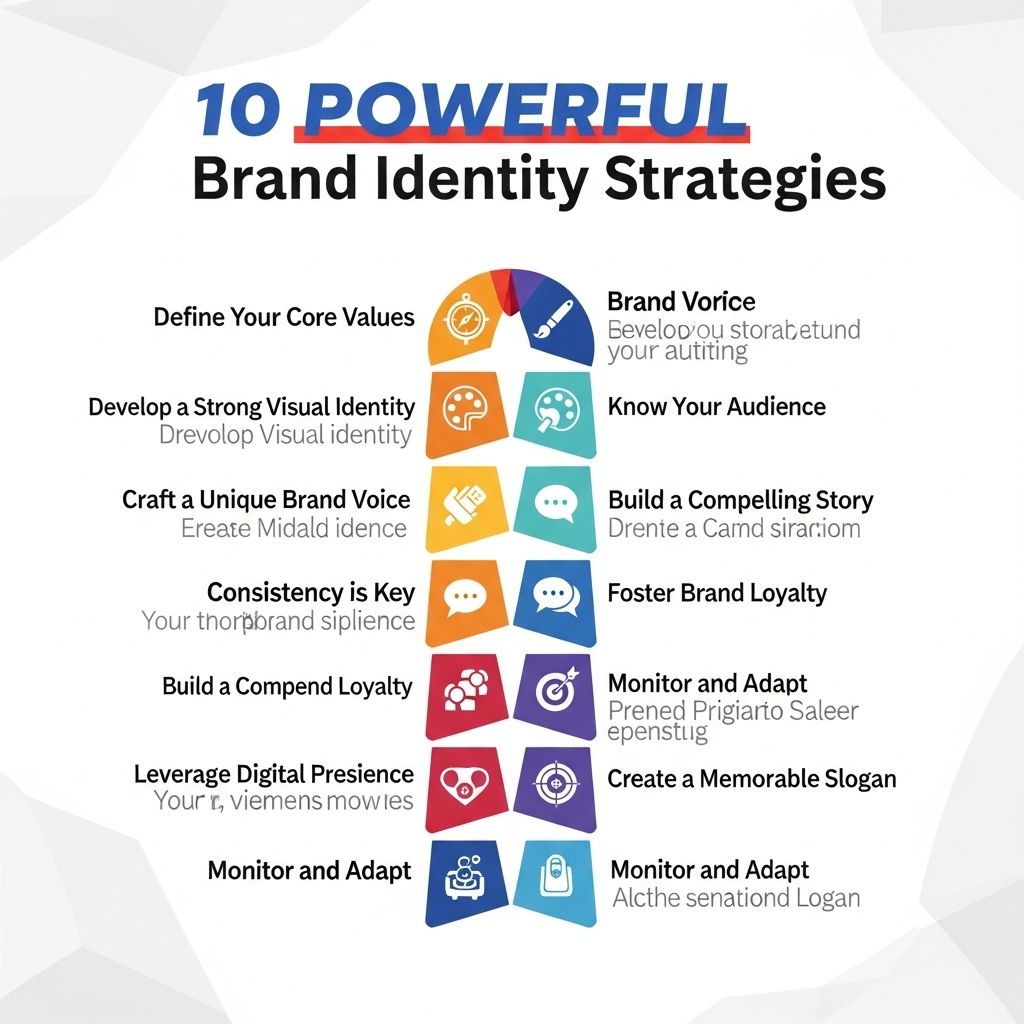In today’s hyper-competitive market, a strong brand identity is essential for businesses looking to differentiate themselves from the crowd. Your brand identity is more than just a logo or a tagline; it encompasses the values, personality, and visual elements that shape how your audience perceives your business. In this article, we will delve into ten powerful strategies for creating a compelling brand identity that resonates with customers and stands the test of time.
Understanding Brand Identity
Before we explore specific strategies, it’s crucial to understand what brand identity entails. It is the collection of all elements that a company creates to portray the right image to its consumer. This includes:
- Logo
- Color palette
- Typography
- Imagery
- Voice and tone
A strong brand identity helps to create customer loyalty, clarify your message, and enhance your credibility in the industry.
1. Define Your Brand Values
Your brand values are the guiding principles that shape your company’s culture and decision-making processes. Clearly defining these values will help you communicate authentically with your audience.
Steps to Define Your Brand Values:
- Identify what is important to your company.
- Determine what you want to be known for.
- Assess your competition’s values.
- Involve your team in the discussion.
Once defined, ensure that these values are reflected in every aspect of your business, from marketing materials to customer interactions.
2. Create a Memorable Logo
Your logo serves as the visual cornerstone of your brand identity. An effective logo is simple, versatile, and relevant to your business.
Characteristics of a Great Logo:
- Memorable: Easy to recall.
- Timeless: Avoid trends that might quickly fade.
- Versatile: Works across various mediums and applications.
- Appropriate: Fits your brand’s personality.
3. Develop a Consistent Color Palette
Color plays a significant role in brand perception. Different colors evoke different emotions and associations, so selecting the right palette is crucial.
Impact of Colors in Branding:
| Color | Emotion | Common Associations |
|---|---|---|
| Red | Excitement, Passion | Energy, Love |
| Blue | Trust, Stability | Corporate, Professional |
| Green | Growth, Health | Nature, Freshness |
| Yellow | Optimism, Clarity | Happiness, Warning |
Choose a color palette that aligns with your brand identity and use it consistently across all platforms.
4. Establish a Unique Voice and Tone
Your brand’s voice and tone should reflect your values and resonate with your target audience. Whether friendly, professional, or quirky, consistency in communication builds trust.
Steps to Develop Your Brand Voice:
- Understand your target audience’s preferences.
- Choose words and phrases that embody your brand values.
- Consider the context in which your brand communicates.
5. Craft a Compelling Brand Story
Every brand has a story. A compelling narrative about your brand’s origin, values, and mission can create an emotional connection with your audience.
Elements of a Great Brand Story:
- Background: Share the journey that led to the creation of your brand.
- Challenge: Discuss the obstacles faced and how they were overcome.
- Vision: Share your aspirations and how you aim to make a difference.
6. Utilize Visual Elements Effectively
Visual elements, including imagery and typography, contribute significantly to brand perception. Consistency in these elements enhances recognizability.
Tips for Effective Visual Branding:
- Choose complementary fonts that reflect your brand personality.
- Use high-quality images that align with your themes.
- Maintain uniformity across all visual content.
7. Engage on Social Media
Social media is a powerful platform for building brand identity. It allows for direct interaction with your audience and for showcasing your brand’s personality.
Strategies for Social Media Engagement:
- Share user-generated content.
- Consistently post relevant content.
- Engage with followers through comments and messages.
8. Build Brand Loyalty Through Experience
Creating a positive customer experience is essential for building brand loyalty. Every interaction with your brand should reinforce your identity.
Ways to Enhance Customer Experience:
- Streamline customer service processes.
- Personalize interactions through data.
- Solicit feedback and act on it.
9. Monitor Your Brand’s Reputation
In the digital age, brand reputation can be easily influenced by customer opinions and online reviews. Actively monitoring and managing your reputation is crucial.
Steps to Monitor Brand Reputation:
- Set up Google Alerts for your brand name.
- Engage with reviews and feedback online.
- Utilize social listening tools to track mentions.
10. Stay Adaptable and Evolve
As markets and consumer preferences evolve, so should your brand identity. Regularly assess your branding strategy, and be open to making changes when necessary.
Indicators that It May Be Time to Evolve:
- Changes in your target audience.
- New competitors in the industry.
- Shifts in market trends.
In conclusion, developing a powerful brand identity involves a multifaceted approach that requires commitment and consistency. By implementing these strategies, businesses can create a strong brand identity that not only resonates with audiences but also drives loyalty and growth in the long run.
FAQ
What are the key components of a strong brand identity?
A strong brand identity includes a unique logo, a consistent color palette, typography, a compelling brand voice, and a clear mission statement that reflects the brand’s values.
How can storytelling enhance brand identity?
Storytelling can enhance brand identity by creating an emotional connection with the audience, making the brand more relatable and memorable through narratives that resonate with consumers.
Why is consistency important in brand identity?
Consistency in brand identity helps build trust and recognition among consumers, ensuring that the brand is easily identifiable across various platforms and touchpoints.
What role does customer feedback play in shaping brand identity?
Customer feedback is crucial in shaping brand identity as it provides insights into consumer perceptions, allowing brands to adapt and refine their identity to better meet the expectations and preferences of their audience.
How can social media influence brand identity?
Social media influences brand identity by providing a platform for brands to engage with their audience, showcase their personality, and communicate their values in real-time, fostering a community around the brand.
What are some effective ways to communicate brand values?
Effective ways to communicate brand values include creating engaging content, utilizing social media platforms, showcasing customer stories, and participating in community initiatives that align with the brand’s mission.




